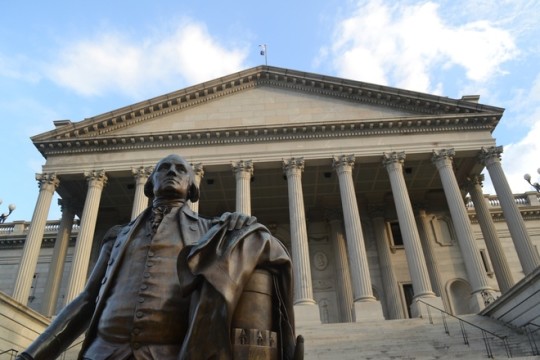
Legislators: stop fussing with education
By HANNAH HILL
$12,007: That’s how much South Carolina spent on average per K-12 pupil in fiscal year 2014-15.
Earlier this week the Education Oversight Committee’s Melanie Barton and the Revenue and Fiscal Affairs office’s Frank Rainwater explained to lawmakers how those dollars are collected and divvied up among South Carolina’s school districts.
In a nutshell, the formulas are broken.
The Education Finance Act of 1977, along with 1984’s Education Improvement Act, laid the groundwork for the state’s public education funding. The legislation established a defined minimum program (for things like curriculum, instruction, class size, etc.), base student cost, and student weightings (the formula for how much each particular student needs in terms of funding).
There were a lot of assumptions built into these formulas, according to Barton. For instance, the base student cost assumed that school districts would be composed of 6,000 students and would have streamlined staffs. Today, over half of South Carolina’s school districts have fewer than 5,000 students and “streamlined” isn’t the first word that comes to mind for the typical district administration.
Then you have the fact that the $12,007 figure is an average of federal, state and local funding. In actuality, the funding level varies widely from district to district. Of the 17 districts that receive less than 70 percent of state funding, some are wealthier coastal counties, but four are less prosperous Abbeville equity lawsuit districts. How can that happen?
Because – according to the Education Oversight Committee’s initial analysis – the weighted pupil enrollment is declining, which cuts into state funding.
In other words, the funding formulas don’t reflect actual need. Nor, according to Rainwater, do they take into account economic factors such as economies of scale or fixed vs. variable costs. As he explained, under the current formula, a 10-student difference will affect the school’s state funding but not necessarily the cost of education.
These are only a few examples of how the landscape has changed in the years since the EFA was passed. The General Assembly has been busy in those years, passing education bill after education bill without considering their impacts on the education system as a whole.
Many of those bills added what one lawmaker referred to as “fluff” – additional programs with accompanying funding that cut into the base student cost. That had the dual effect of making the system more complex and lowering the overall efficiency and quality of results.
So what do we take away from all of this?
For one thing, we don’t need to allocate more money to the education system. As Barton put it, money alone doesn’t fix education: It’s how you spend it. And the spending is not currently based on realistic or efficient models.
That brings up the greater point: The state needs to quit micromanaging the education system.
It’s not lawmakers’ jobs to tell educators how to educate kids. It’s the state’s job to fund the system and define desired outcomes. Let the school districts and teachers determine the best way of achieving them.
As for accountability, to ensure districts spend their funds appropriately, this is where school choice can go a long way – but that’s a discussion for another day.
